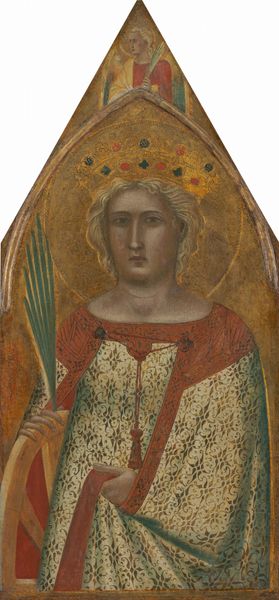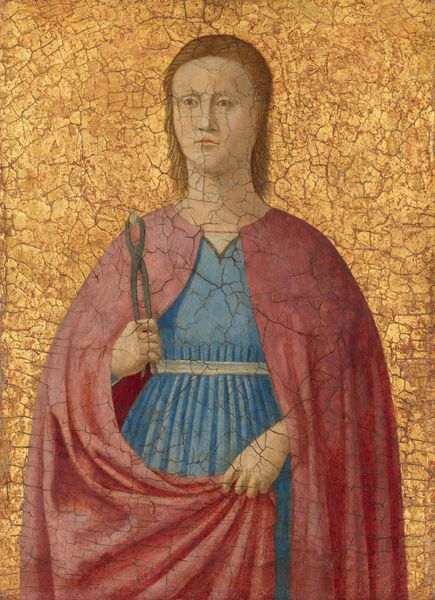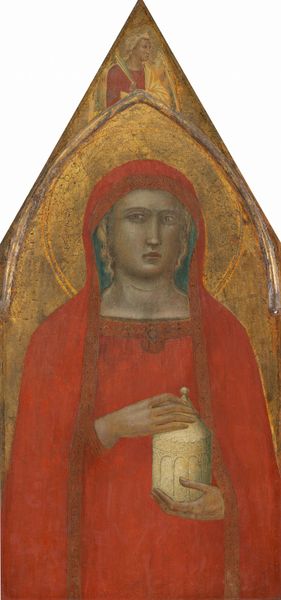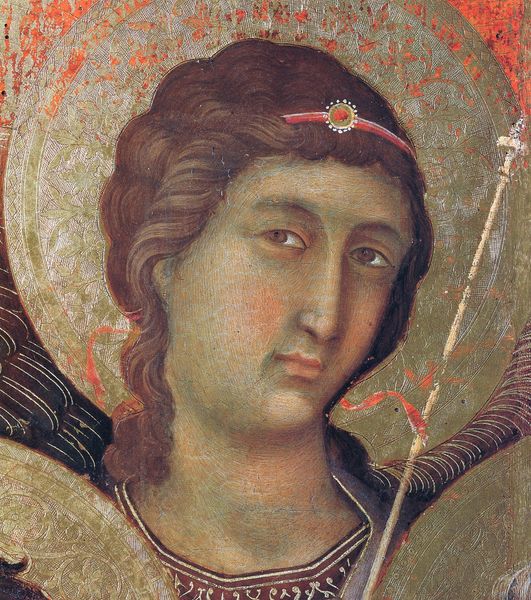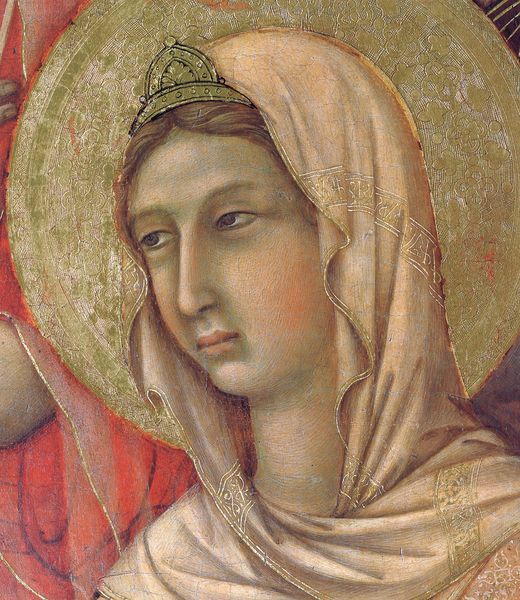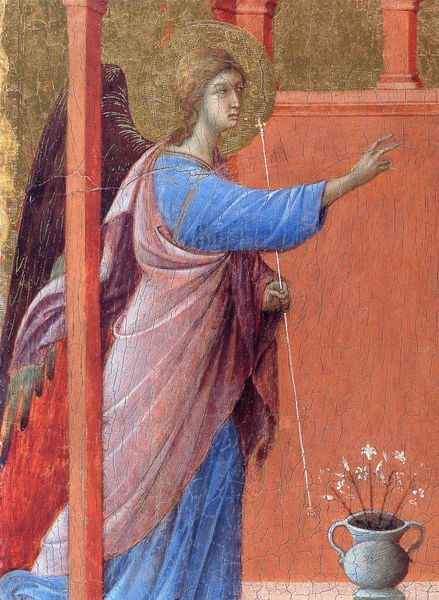
panel, tempera
#
portrait
#
panel
#
tempera
#
sienese-school
#
figuration
#
portrait head and shoulder
#
history-painting
#
italian-renaissance
#
early-renaissance
#
portrait art
Dimensions: Overall 26 x 16 1/4 in. (66 x 41.3 cm); painted surface 24 1/2 x 16 1/4 in. (62.2 x 41.3 cm)
Copyright: Public Domain
Editor: So this is Pietro Lorenzetti's "Saint Catherine of Alexandria," made with tempera on a panel between 1342 and 1344. The way she's looking directly at us is pretty striking, almost confrontational, isn't it? How do you interpret this work? Curator: Indeed. Looking at this piece, I immediately think of the social and political climate that informed its creation. Consider the power structures of the time – the Church, the aristocracy. Saint Catherine, a woman, is depicted not just as holy, but as regal, holding a palm frond symbolizing martyrdom and victory over death. Who was this portrait really for, and what does it suggest about their values, perhaps their hopes or anxieties regarding female power? Editor: That's interesting. So, you're suggesting the painting might reflect contemporary attitudes toward women in power, not just about religious devotion? Curator: Precisely. Think about the debates within feminist theory surrounding representation. Is this image empowering, or does it merely reinforce existing hierarchical structures by portraying her within a patriarchal framework of royalty and religion? The lavish fabrics and ornamentation feel deliberate. Does this speak to her elevated spiritual standing, or perhaps to the opulence of the Church itself? Editor: I hadn't really considered that. It makes me wonder, what would someone from that time have thought about our interpretation of this artwork now, given our modern understanding of those issues? Curator: That's a vital question. The goal is not to impose a singular reading but to facilitate an ongoing conversation between the past and the present, acknowledging our own biases and perspectives. The intersectional narratives within this piece highlight identity, gender, and politics – it becomes a space for questioning power and representation itself. Editor: Thank you for sharing this perspective! I see how it allows us to dig deeper and challenges us to be more critical when interpreting these older artworks. Curator: Exactly, and that is what keeps these narratives around art relevant.
Comments
No comments
Be the first to comment and join the conversation on the ultimate creative platform.
